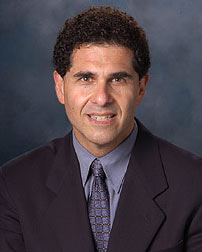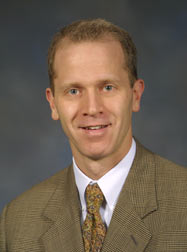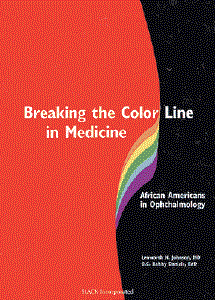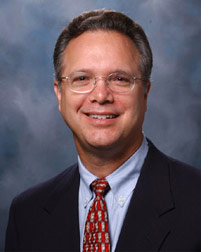Iowa Eye Association News
Dec. 2002. Ser. 2, suppl. to No. 37
Ophthalmology & Visual Sciences
|
University
of Iowa Ophthalmology & Visual Sciences |
Dr. Randy Kardon and Dr. Steve Goldin (fellow in neuro-ophthalmology) are the recipients of an $18,000 grant from the Madison Community Foundation (MCF) which funds clinical research in vascular disease. The grant allows them to study the dynamics of fluorescein angiography with the Heidelberg Retinal Angiographic camera in patients with anterior ischemic optic neuropathy (AION). Quantifying the dynamics of choroidal filling with dye will be used to differentiate the arteritic from the non-arteritic cause of AION. They are working with Heidelberg to develop the system and software analysis of the results. MCF is a community trust that was established in 1942 to enhance the lives of the citizens of Dane County, Wisconsin. Recipients of the funds are not restricted to residents of Dane County; MCF is permitted to distribute funds anywhere in the United States upon the donor's recommendations.
 |
 |
| Dr. Randy Kardon | Dr. Steve Goldin |
| Dr. Jeff Nerad will be visiting King Khaled Eye Specialist Hospital (KKESH) in Riyadh, Saudi Arabia in March 2003. Dr. Michael D. Wagoner is currently the Medical Director at KKESH, he was a member of the Cornea faculty at the University of Iowa Department of Ophthalmology from 1999 to the fall of 2002. |  |
Dr. Keith Carter
is among those leaders highlighted in the new book, Breaking the Color Line
in Medicine: African Americans in Ophthalmology on the role of African Americans
in Ophthalmology. The book (co-authored by Bob Daniels and Lenworth N. Johnson
-- chair of the National Medical Association Ophthalmology Section and neuro-ophthalmologist
at the University of Missouri in Columbia, MO) includes a historical perspective
on the factors influencing the entrance of  African
Americans into the field of ophthalmology. The second section of the book
presents over 50 biographical sketches of African Americans — born
in the United States, Africa, the Caribbean, and Asia — who have become
ophthalmologists. Dr. Stan Thompson contributed a foreword to the book.
Breaking the Color Line in Medicine: African Americans in Ophthalmology.
Slack, Inc, 2002. African
Americans into the field of ophthalmology. The second section of the book
presents over 50 biographical sketches of African Americans — born
in the United States, Africa, the Caribbean, and Asia — who have become
ophthalmologists. Dr. Stan Thompson contributed a foreword to the book.
Breaking the Color Line in Medicine: African Americans in Ophthalmology.
Slack, Inc, 2002. |
|
 Dr. Keith Carter |
 Pohnpei
Low Vision Project Pohnpei
Low Vision ProjectDr. Mark Wilkinson will be the lead optometrist/low vision specialist for the Pohnpei Low Vision Project. Dr. Mark Wilkinson and Donna McNear, educator and original organizer of the project, will conduct an initial visit to Pohnpei and Guam, February 2003. The purpose is to conduct initial low vision exams, begin training with special education staff, and meet with partner organizations to plan for future low vision services in the Federated States of Micronesia (FSM). Future visits will be funded in collaboration with the Rotary Clubs of Guam and Pohnpei. The Pohnpei Low Vision Project is an international collaborative project of Micronesia Missions providing low vision services to the children on Pohnpei with plans to expand the project to other areas in the FSM. This project will make a long-term difference to the children because of the collaboration with local organizations and the affiliation with the Pohnpei Department of Education. This relationship will provide follow-up services that are critical in helping children improve their ability to see and develop literacy skills. This is a critical need because of the unusually high incidence of children with visual impairments, partially due to the condition of achromatopsia documented in the book, Island of the Color Blind, by Dr. Oliver Sacks. |
|
The Iowa City VAMC has been awarded a five year Research Enhancement Award Program (REAP) that focuses on the study of vascular disease in diabetes. The award provides $250,000 per year to support both pilot projects and the training of new investigators. Dr. William Sivitz is the principal investigator, and co-investigators are Dr. Randy Kardon (Ophthalmology) and Drs. Kevin Dellsperger, and Donald Heistad (Internal Medicine). The projects, to be supported by the REAP, include both basic and patient-focused research projects.
|
|
| "Together, we have a vision for the future" | Copyright © University of Iowa 2002 |